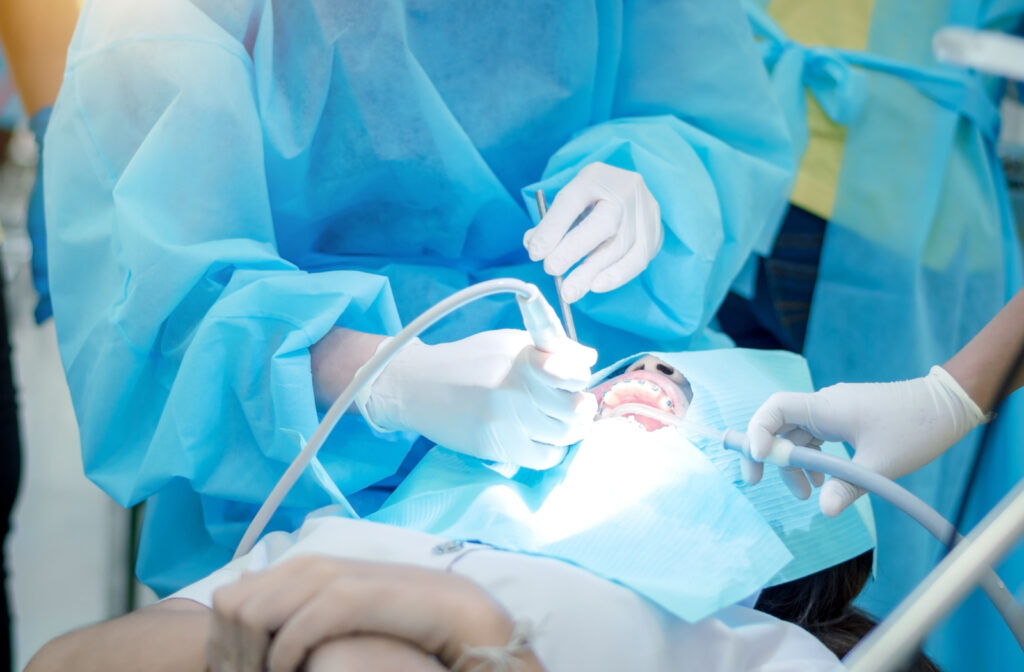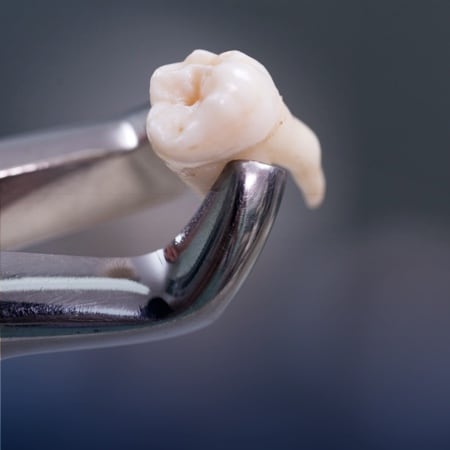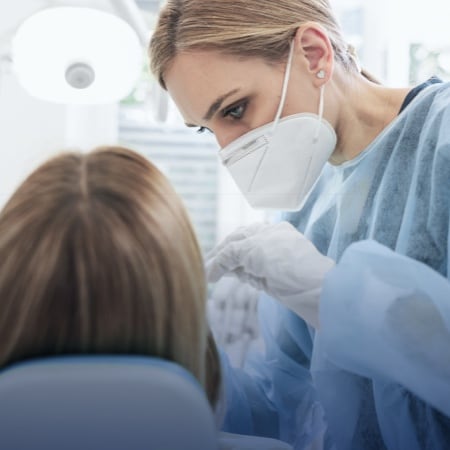When you need a dental implant, there are several factors at play. Dental implants require enough bone density to properly support the implant. If you do, then your surgeon can perform the surgery as needed—but if not, you may need a bone graft.
During a bone graft, your dental surgeon will take a small, sterilized piece of bone—usually from your own body—and install it under the surgical site. It will take a couple of months to heal, but then you can begin your implant surgery.
What Is a Bone Graft?
A bone graft is a specialized surgical procedure that uses transplanted bone to repair diseased or damaged areas in your jaw. It’s often required when the jawbone has shrunk, developed improperly, or is damaged or weak. This procedure is performed by an experienced dental surgeon and typically takes only a couple of hours.
Bone grafts aren’t always required. Most people have enough strength in their jaw to support future implants or other surgeries. Bone grafts are only necessary when the jaw is no longer strong enough to handle surgery or if your surgeon is worried about how it can affect you in the future.
There are several types of bone grafts, but at CVOS, we primarily perform:
- Sinus lifts: This procedure involves adding bone below the sinus where the natural bone has deteriorated due to missing upper back teeth.
- Socket preservation: This procedure is performed after a tooth extraction to reduce bone loss. The socket is filled with bone or bone substitute and allowed to heal.
For grafting material, we use bone from your hip, tibia, or back of your jaw.
When Do You Need a Bone Graft?
A bone graft aims to restore the function of the bone so it can properly support a later surgery in the area. For example, if you’re getting a dental implant, it needs to anchor in the jaw itself—so a bone graft is performed to support the future implant and strengthen the bone in your jaw.
A bone graft can help if you’ve lost bone in your jaw due to:
- A lost tooth
- Disease or infection
- Trauma to the face
In any of these cases, a bone graft helps to stimulate your jaw and promote healing so the bone can support the area in the future.
The Bone Grafting Procedure
If you’re getting a bone graft to support an implant, our team at CVOS will start by removing the damaged tooth. Then, a small, sanitized piece of bone is taken from either your hip, tibia, or another part of the jaw. We’ll use anesthesia to avoid discomfort during this procedure.
In some cases, we may use a sterilized piece of animal bone, since it can often bond just as well to your own bone. We’ll carefully place this piece of bone at the surgical site and seal it using a special membrane that will dissolve under the gum over time.
Once this process is complete, you’ll go home to heal and recuperate.

How Long Does a Bone Graft Take to Heal?
A bone graft can take around 3 to 9 months to heal fully. During this time, you may notice some soreness and discomfort, but it should go away in time.
Fortunately, there are some steps you can take to help the healing process, including:
- Avoid touching or rubbing the surgical site
- Stay hydrated
- Maintain a healthy diet
- Limit physical activity that can affect the surgical site
- Avoid smoking, as it can inhibit the healing process.
And always follow your dental surgeon’s advice. Remember: a dental surgeon has a wealth of knowledge and expertise on bone grafts, and they can help you speed up your recovery.
After you’ve fully recovered from the bone graft, you will be contacted for a return for a visit. Your dental team will examine the area and determine whether or not your jaw is now strong enough to support an implant. They’ll then walk you through what to expect next.
How Can I Tell If I Need a Bone Graft?
wNot everyone will need a bone graft before another surgery. It depends on how healthy your jaw is and if it’s strong enough to support what you need done. If you are considering dental implants to replace missing, broken, or damaged teeth, contact us at CVOS Oral Surgery. Our team of surgeons is here to provide you with the expertise needed for a smooth and effective oral procedure.









